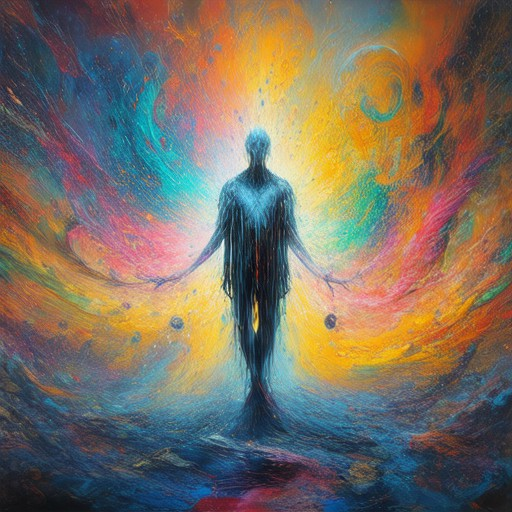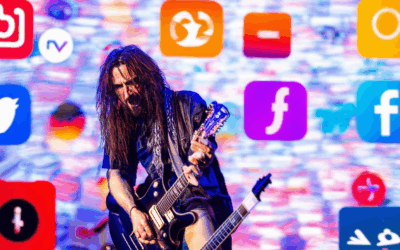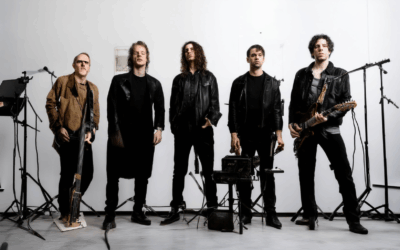Creating a music video is a thrilling journey that transforms your artistic vision into a captivating visual experience. Whether you’re a seasoned creator or just beginning, the process of crafting a music video offers endless possibilities. With the right tools and techniques, anyone can unlock their creative potential and craft a compelling piece that resonates with audiences. Discover how to create music videos that captivate and inspire, even if you’re working on a tight budget. From using your smartphone to exploring free editing software, this guide provides practical tips to bring your musical vision to life. Whether you’re aiming to create a YouTube sensation or a personal project, these expert insights will help you navigate the process with confidence.
Creating a music video on a budget requires careful planning and resourcefulness. Here’s a structured approach to achieve your goal:
Essential Gear Strategy
- Camera: Opt for a used DSLR like the Sony a7 III or Blackmagic Pocket 4K for balance between quality and cost. Ensure it comes with a kit lens for versatility.
- Microphone: Invest in an affordable USB mic, such as the Samson Meteor Mic, known for clear sound quality under $50.
- Lighting: Use natural light whenever possible. Consider borrowing or purchasing basic lighting equipment like a reflector or ring light.
- Stabilization: Create a DIY rig using materials like cardboard and duct tape to stabilize your phone or camera.
- Software: Utilize free alternatives like DaVinci Resolve for video editing and find royalty-free music from platforms like YouTube Audio Library.
Script and Storyboarding
- Script: Find a simple template online to outline your video’s structure, focusing on key scenes and visuals.
- Storyboarding: Sketch out main scenes to plan shots and ensure a cohesive narrative flow.
Budget-Friendly Backdrop and Scenery
- Use a plain white wall or consider a green screen setup with affordable fabric. This offers flexibility in post-production.
Storage Solutions
- Invest in fast SD cards or hard drives to ensure efficient storage of your footage. Carry extra batteries to maintain uninterrupted shooting sessions.
Community and Collaboration
- Partner with friends who have the necessary equipment or join collaborative projects to share resources and expertise.
By prioritizing essential tools and leveraging available resources, you can create a professional-looking music video within your budget. Focus on practice, learning, and gradual improvement to enhance your skills over time.

How to Create Your Own Music Video
Creating a music video can be an exciting project that brings your song to life. Here’s a step-by-step guide to help you get started:
- Plan Your Concept
- Prepare Your Equipment
- Select a Location
- Cast Your Talent
- Write Your Script
- Storyboard Your Shots
- Acquire Props and Wardrobe
- Rehearse with Your Cast
- Record Audio Separately
- Shoot Your Video
- Edit Your Footage
- Export and Upload
- Seek Collaboration and Feedback
Start by outlining the overall theme and mood of your video. Consider the song’s lyrics and choose a visual style that matches the emotion and energy of the track.
Gather your smartphone, extra batteries, lighting sources (like natural light or LED lamps), and a microphone. If possible, obtain a tripod for stable shots and a separate audio recorder.
Choose a setting that complements your song’s vibe. Options include outdoor spaces like parks or forests, or indoor locations like your room or a studio. Test the location for lighting and background aesthetics.
Recruit friends or family who can deliver natural performances. Discuss the video’s tone and provide them with a basic understanding of the scenes they’ll appear in.
Develop a storyboard or script that aligns with your song’s structure. Each scene should reflect the song’s progression, from verses to choruses and bridges, culminating in an impactful outro.
Sketch out the video’s key moments, including angles and transitions, to ensure smooth filming and editing. Plan shots that enhance the narrative and emotional impact of your song.
Collect props that resonate with your theme, such as a skateboard for an urban feel or a cowboy hat for a western vibe. Coordinate outfits to match the visual style.
Conduct dress rehearsals to ensure your cast understands their roles and lines. Capture B-roll shots of surroundings, close-ups, and actions that enrich the storyline.
Record high-quality audio using your smartphone or a lapel microphone. Capture clear sound in a quiet environment or outdoors to sync with your video later.
Begin filming, focusing on each scene as per your storyboard. Stay patient and adaptable, allowing for spontaneity and flexibility during shooting.
Organize your clips by scene, add transitions and effects, and synchronize the video with your recorded audio. Adjust pacing to match the song’s tempo and enhance visual appeal with titles and effects.
Export your video in the highest quality format suitable for platforms like YouTube and TikTok. Write an engaging title, description, and tags, then upload and share with your network. Engage with viewers by responding to comments.
Collaborate with others who may offer unique skills, such as editing or additional equipment. Share your video widely and use viewer feedback to refine future projects.
How to Turn Video into Music
To transform a video into music, consider the following structured approach:
- Extract Audio : Utilize tools like Adobe Premiere Pro or Audacity to separate the audio from the video. This allows you to work with the sound elements independently.
- Generative AI Tools : Explore platforms such as OpenAI’s Jukedeck or Amper Music. These tools may analyze video content to generate music, though effectiveness can vary based on the tool’s capabilities.
- Inspiration and Songwriting : Use video content as a source of inspiration. Describe scenes or emotions to guide songwriting, helping to create music that aligns with the video’s atmosphere.
- Royalty-Free Music : If rights permit, seek tracks from libraries like the Free Music Archive or YouTube Audio Library that match the video’s tone and mood. Edit these tracks to fit the video’s duration and style.
- Music Video Creation : Employ video editing software like DaVinci Resolve to create a music video, syncing existing music with visual content. This involves importing music and adjusting timing to match the video’s pace.
Each method offers distinct approaches, from audio extraction to creative generation, catering to various artistic goals and technical capabilities.

Best Apps to Create a Music Video
Creating a music video involves editing, mixing, and syncing video clips with audio tracks. Here are some top-rated apps and tools that can help you create professional-looking music videos:
- CyberLink Media Suite – A versatile video editing tool that includes various features like video editing, animation, and effects. It’s known for its user-friendly interface and comprehensive tools. [CyberLink](https://www.cyberlink.com)
- Adobe Premiere Pro – One of the most powerful video editing software available, offering advanced features like multi-cam editing, motion graphics, and more. Ideal for professionals and serious creators. [Adobe Premiere Pro](https://www.adobe.com/products/premiere-pro)
- Final Cut Pro – Apple’s professional-grade video editing software, known for its intuitive interface and high-end features. It’s a favorite among video editors but requires a Mac computer. [Final Cut Pro](https://www.apple.com/final-cut-pro)
- DaVinci Resolve – A free video editing software that rivals premium options. It offers advanced color grading, fusion effects, and more. Great for those looking for professional results without the cost. [DaVinci Resolve](https://www.davinciresolve.com)
- HitFilm Pro – An affordable video editing solution with features like green screen, animation, and compositing. It’s a solid choice for those on a budget. [HitFilm Pro](https://www.hitchfilm.com)
- Corel VideoStudio – Known for its ease of use, Corel VideoStudio offers basic to intermediate video editing features along with creative tools. It’s a good option for casual users. [Corel VideoStudio](https://www.corel.com/video-studio)
When choosing the best app for making a music video, consider factors like your budget, the level of customization you need, and the platform you’re working on (Windows vs. macOS). Many of these apps offer free trials or demo versions, so you can test them out before committing.

What Equipment Do You Need to Make a Music Video?
To create a music video, you’ll need a mix of hardware and software tools. Here’s a breakdown of the essential equipment:
- Camera : A high-quality DSLR camera or mirrorless camera with good video capabilities. These cameras offer better resolution and controls compared to smartphones.
- Lighting : Basic lighting equipment like a reflector or ring light can significantly improve the visual quality of your video. Professional lighting can be rented or purchased.
- Microphone : An external USB microphone or a shotgun microphone is recommended for clear audio capture, especially if you’re recording vocals or live performances.
- Tripod and Stabilizer : A sturdy tripod ensures stability, preventing shaky footage. A stabilizer can help if your tripod isn’t sufficient.
- Video Editing Software : Tools like Adobe Premiere Pro, Final Cut Pro, or DaVinci Resolve are industry standards for editing and producing high-quality videos.
- Stock Footage and Music : Consider subscribing to platforms like Storyblocks for royalty-free stock footage and Epidemic Sound or Artlist for music licensing.
- Backdrop and Scenery : A large backdrop or green screen can enhance the visual appeal of your video. Green screens allow for more creative editing possibilities.
- Cables and Storage : Ensure you have ample cables, SD cards, or hard drives for storing footage. Extra battery packs for your camera and microphone are also advisable.
- Pop Filter : To minimize audio issues, a pop filter is essential for reducing vocal plosives during recording.
By equipping yourself with these tools, you can create a professional-looking music video tailored to your vision and budget.
Do you need a script for a music video?
Yes, a script is essential for creating a music video. It serves as the blueprint for the entire production, guiding the visual storytelling, pacing, and overall direction. Here’s a breakdown of why a script is crucial:
1. Storyboarding
A well-structured script allows for effective storyboarding, where scenes are visualized and organized. This helps in planning shots, angles, and transitions, ensuring the video remains cohesive and visually appealing.
2. Pacing
The script dictates the rhythm of the video. Proper pacing ensures that key moments, emotions, and visual elements align with the beat of the song, making the video engaging and impactful.
3. Emotional Arc
A strong script captures the emotional journey of the song. It helps in conveying the intended mood, whether it’s energy, nostalgia, or introspection, through visuals and actions.
4. Collaboration
Scripts facilitate communication between directors, artists, and crew. They provide a shared vision, reducing misunderstandings and ensuring everyone works toward the same goals.
5. Revisions
Scripts are revised during pre-production to refine ideas, correct pacing, and enhance storytelling. This iterative process leads to a polished final product.
6. Final Touches
Even minor details in the script influence the last cuts. It ensures that the video’s opening, middle, and end sections resonate with the audience and leave a lasting impression.
Without a solid script, a music video risks feeling disjointed or failing to capture the essence of the song. A well-crafted script elevates the production, making it visually compelling and emotionally resonant.
For more insights into crafting an effective music video script, visit our guide .

Best Camera for a Music Video
For capturing dynamic performances and vibrant visuals, selecting the right camera is essential. Here’s a curated list of top cameras tailored for music video production:
- Sony a7 Series
Renowned for its exceptional image quality and versatility, the Sony a7 III or a7 IV offers a full-frame sensor, delivering rich colors and detail. Its advanced autofocus system ensures sharpness, even in motion. The a7 series is compact yet powerful, ideal for on-location shoots. - Canon EOS R Series
Known for reliability and ease of use, the EOS R6 or R7 combines a 20.2 MP CMOS sensor with Dual Sensing IS, providing smooth stabilization. The intuitive interface and excellent low-light performance make it a favorite among videographers. - Nikon Z Series
The Z6 II or Z7 II boasts a 45.75 MP FX-format sensor and advanced features like 4K UHD video recording. Its lightweight design and robust autofocus system make it perfect for capturing crisp, cinematic moments. - Blackmagic Pocket 4K
While slightly more affordable, the Blackmagic Pocket 4K offers professional-grade video quality. Its Super 35mm sensor and high ISO performance make it ideal for dynamic lighting conditions, despite its compact size.
Each of these cameras excels in different aspects, catering to various shooting styles. Whether you prioritize image quality, portability, or budget, there’s an option that fits your needs. Consider your specific requirements and explore these recommendations to find your perfect match for music video production.



0 Comments